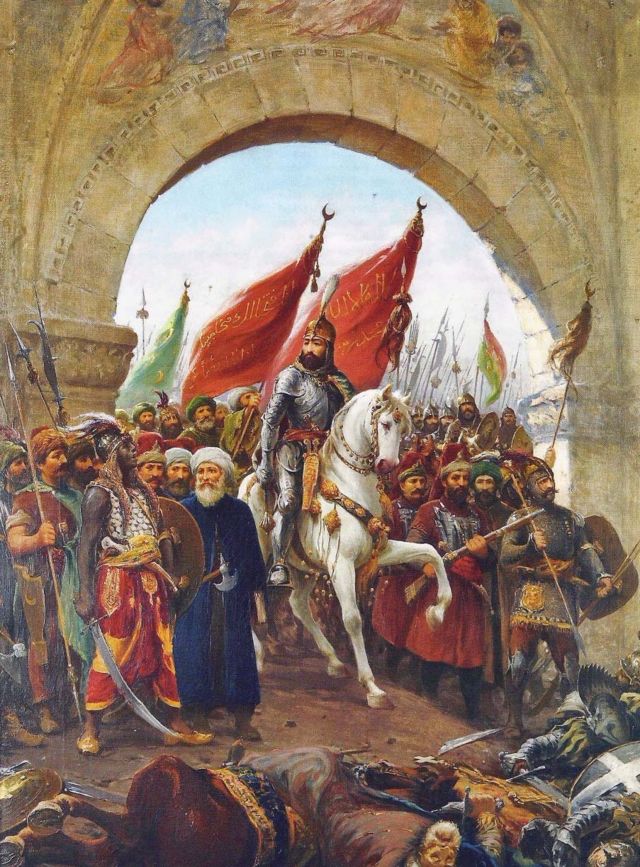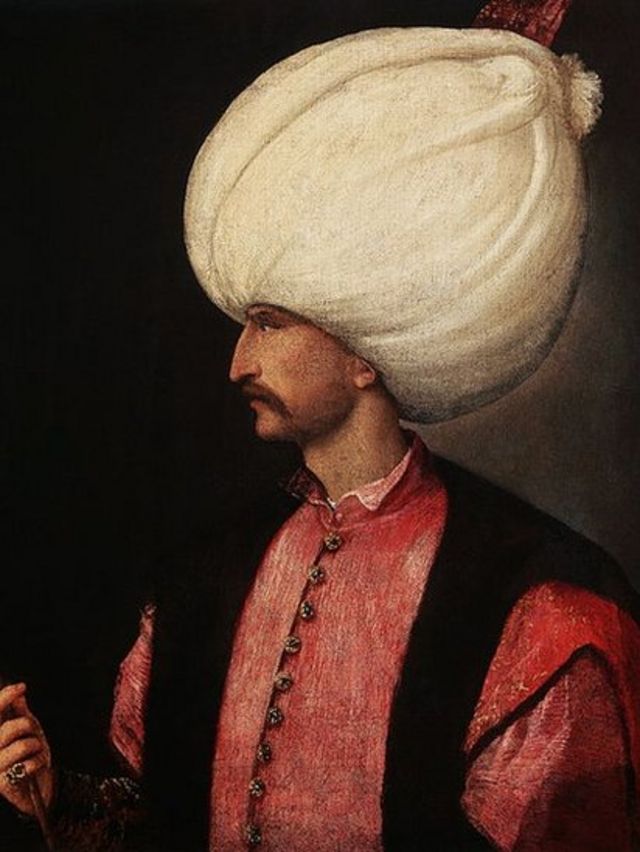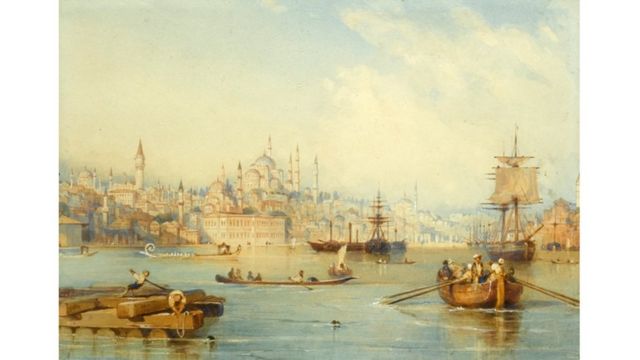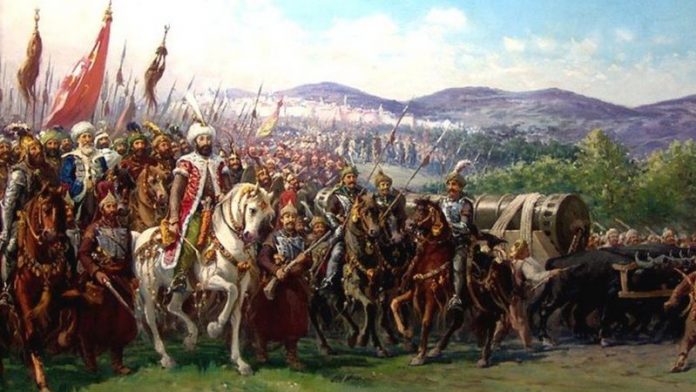May 29, 1453: It is half past midnight. From the walls and domes of one of the oldest and greatest cities in the world, the yellow moon of the 19th lunar history is rushing towards the west as if it is in imminent danger.
In the dim light of the setting moon, viewers can see the armies gathering outside the city walls in an orderly manner. He feels in his heart that he is at a turning point in history.
The city is Constantinople (now Istanbul) and the Ottoman army is preparing to make a final attack outside the walls. 47 days have passed since the Ottoman artillery shelled the city. The commanders inflicted heavy damage on the wall, focusing on three areas in particular.
The 21-year-old Ottoman Sultan Muhammad II unexpectedly reached the front lines of his army. They have decided that the final invasion will be from the central part of the wall called the ‘Meso Tequin’, which has at least nine cracks and a large part of the trench has been dug.
Wearing a heavy turban and a golden cloak, the Sultan addressed his soldiers in Turkish: ‘My friends and children, go ahead, it is time to prove yourself!’
At the same time, the noise of bells, horns, drums and herons silenced the silence of the night, but even in this ear-splitting noise, the slogans of the Ottoman troops could be clearly heard, who attacked the weak parts of the wall. spoken. Cannons on ships on land on the one hand and at sea on the other began to fire.
Byzantine soldiers were standing on the walls ready for the attack. But the siege of the last month and a half had dampened his spirits and broken his nerves. Many civilians also rushed to the walls for help, picking up stones and throwing them at the assailants who had gathered below. Others run to their nearest church and start chanting. The clergy began ringing the bells of various churches in the city with all their might, waking up those who were still asleep.
Christians from all denominations came together, forgetting their centuries-old differences, and a large number of them gathered in the city’s largest and holiest church, the Hagia Sophia.
The defense forces desperately tried to stop the Ottoman invasion. But the Italian physician Niccolo Barbero, who was in town that day, wrote that the attackers, dressed in white turbans, were attacking the Janissaries like “liverless lions” and that their slogans and drums sounded as if they had nothing to do with the world. Be
By the time the light came on, the Turkish soldiers had reached the top of the wall. Most of the defense forces had been killed and their commander, Giovanni Justiniani, had been seriously wounded and left the battlefield.
When the first rays of the sun appeared from the east, he saw a Turkish soldier unfurling a Byzantine flag over the Kirkuporta gate and waving an Ottoman flag in its place.
Sultan Muhammad arrived in Hajia Sofia on a white horse with his ministers and elders. As the president approached the door, he dismounted and took a handful of dust from the street and put it on his turban. Tears welled up in the eyes of his colleagues.
After seven hundred years of struggle, the Muslims finally succeeded in conquering Constantinople.
The conquest of Constantinople was not merely the end of one king’s rule over one city and the beginning of another. With this event, one chapter of world history ended and another began.
On the one hand, the Roman Empire, founded in 27 BC, came to an end after remaining in one form or another for 1480 years, on the other hand, the Ottoman Empire reached its zenith and for the next four centuries, She ruled parts of Europe and Africa with great pride.
1453 is the year that is considered the end of the Middle Ages and the beginning of the modern age. Not only that, but the conquest of Constantinople is also considered a milestone in military history because it later proved that walls are now insufficient to protect a city after the use of explosives and the shelling of large cannons.
After the Turkish occupation of the city, thousands of Greek-speaking citizens fled to various cities in Europe, especially Italy. At that time, Europe was going through a ‘dark age’ and was cut off from ancient Greek civilization. But throughout this period, the Greek language and culture remained largely intact in Constantinople. The migrants who arrived here had a treasure trove of diamonds and jewels. Original Greek versions of Aristotle, Plato, Ptolemy, Galen and other scholars.
All of these played a significant role in the revival of ancient Greek science in Europe, and historians say that they led to a renaissance in Europe that helped Europe to overtake the rest of the world in the centuries to come. Is.
However, the city that the young Sultan Muhammad, known to the world today as Sultan Muhammad the Conqueror, saw on the morning of May 29 was not the city he had heard of since childhood. After a long decline, the Byzantine Empire was dying and Constantinople, which for centuries had been the largest and richest city in the world, now had a population of a few thousand and many parts of the city were deserted. They were cut off from each other and turned into separate villages.

It is said that the young Sultan, seeing the plight of the city, recited this poem attributed to Sheikh Saadi:
Boom Turn Mezand on Tarim Afrasiab … They cover the castle of the spider
(Owls take turns on the minarets of Afrasiab … Spiders have become webs on Caesar’s palace)
The ancient name of Constantinople was Byzantium. But when the Roman Emperor Constantine I moved his capital from Rome to here in 330 AD, the city was renamed Constantinople after its name (which became ‘Constantinople’ when it reached the Arabs). After the fall of the Roman Empire in the West, the empire remained in Constantinople, and from the 4th to the 13th century, the city developed to such an extent that no other city in the world could claim its equality.
That is why Muslims have been dreaming of conquering this city from the very beginning.

So, after a few initial attempts failed to achieve this goal, in 674 he prepared a large fleet and sailed for Constantinople. The fleet set up camp outside the city and continued to cross the walls for the next four years.
Finally, in 678, Byzantine ships sailed out of the city and attacked the invading Arabs. This time they had a powerful weapon, called the Greek Fire. The exact formula is not yet known, but it was a flammable substance that was thrown by arrows and stuck to boats and ships. In addition, pouring water would further ignite the fire.
The Arabs were not ready to face this disaster. So as soon as he saw it, the whole navy began to look like a volcano. The soldiers jumped into the water and tried to save their lives, but they could not find shelter because the fire of Greece kept burning even after falling on the surface of the water and it seemed as if the whole Sea of Marmara had caught fire.
The Arabs had no choice but to retreat. On the way back, a terrible hurricane made up for the shortfall, but only half of the hundreds of boats survived.
During the same siege, the famous Companion Abu Ayub Ansari also laid down his life. His tomb is still outside the city walls. Sultan Muhammad the Conqueror built a mosque here, which the Turks consider a sacred site.
Then, in 717, Sulayman ibn ‘Abd al-Malik, the Emir of the Umayyads, besieged Constantinople again with much better preparation, but it did not end well, and only five of the nearly 2,000 warships survived. I can succeed.
The Abu Ayub Ansari Mosque is still a holy site for the Turks

Perhaps this was the reason why the Muslims did not return to Constantinople for six centuries after that, until Sultan Muhammad the Conqueror finally hoisted his flag over the city and replaced all the old ones.
After capturing the city, the sultan moved his capital from Edirne to Constantinople and chose for himself the title of Caesar of Rome. In the decades to come, the city saw a rise that once again brought back memories of the greatness of the past.
The sultan sent a decree to his kingdom: ‘Whoever wants to come, let him have a house and a garden in the city.’ Not only that, he also invited people from Europe to come to Constantinople so that the city could be repopulated.

He also rebuilt the city’s dilapidated infrastructure, repaired old canals and installed drainage systems. It also began a series of large-scale new constructions, the biggest examples being the Cannon Copy Palace and the Grand Bazaar. Soon all kinds of artisans, craftsmen, merchants, calligraphers, painters, goldsmiths, and other craftsmen began to flock to the city.
Sultan the Conqueror converted the Hagia Sophia from a church to a mosque, but he left the city’s second largest church, the Apostolic Church, to the Greek Orthodox sect, and this sect still exists as an institution.
During the reign of Sultan Fatih’s son, the Ottoman Empire became a caliphate, with Constantinople as its capital, and the center of all Sunni Muslims.
Constantinople reached new heights during the reign of Sultan Fatih’s grandson Suleiman the Magnificent. This is Suleiman who is featured in the famous Turkish play My Sultan. Queen Khurram Sultan of Suleiman the Magnificent hired the famous architect Sinan who built a magnificent palace for the queen. Other famous buildings in Sanan include Sulaymaniyah Mosque, Khurram Sultan Hammam, Khusrau Pasha Mosque, Shahzada Mosque and other buildings.

The fall of Constantinople had a profound effect on Europe, where books and poems were written and numerous paintings were made, and the event became part of their collective consciousness.
That is why Europe has never forgotten it. Despite being an important part of NATO, the European Union has been reluctant to accept Turkey for centuries.
In Greece, Thursday is still considered an ominous day. May 29, 1453 was a Thursday.


